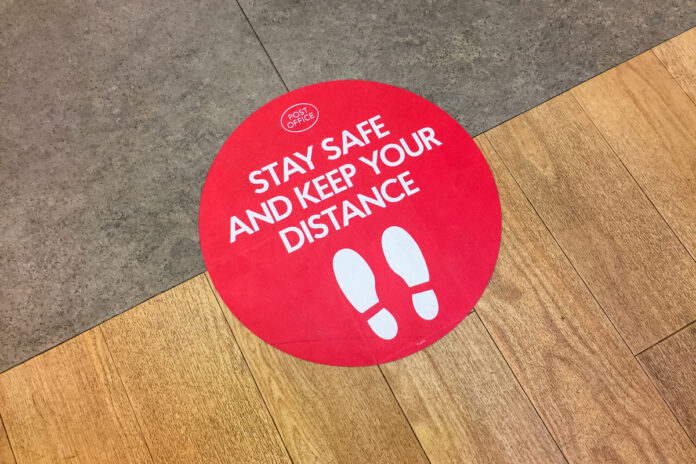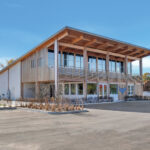Like all architecture, cannabis dispensary design has experienced several trends. Many shops are moving away from the sterile look of a serious medical facility that was commonplace for years. More recently, we’ve seen the construction of some truly beautiful shops including stores that emulate a speakeasy or an Apple store. Now, with a future that surely will be shaped by the COVID-19 pandemic for years to come, dispensary design needs to address new concerns.
For this week’s “Changing Habits” installment, mg spoke with dispensary designers Melanie Coddington, founder of dispensary design firm Sungrown Studio, and Lynn Young, vice president at Seed to Flower who also has worked for Sherbinkskis and MedMen to find out how shops can be designed to maximize safety during the pandemic and beyond.
While the coronavirus pandemic is making us rethink much of our everyday behavior, there are easy steps dispensaries can implement from a design standpoint that can have an immediate impact. Having a dispensary designed and built, and then opening it for business is a costly undertaking so the option of starting over from scratch is simply not viable for most operators. Instead, begin by implementing small, cost-conscious changes.
Young believes dispensary operators should consider eliminating bud bar displays. If a retailer prefers to continue using them, there are precautions that can be taken such as having a dedicated line for customers in need of strain education and having a single staff member assigned to the area. But, if possible, she said managers should consider moving away from these displays for now.

“I would not recommend the use of bud bar displays during the COVID-19 pandemic,” Young said. “Bud bar displays are on the high touch list.”
In fact, Young strongly urges dispensary managers to develop sanitary plans for all high touch surfaces including tables, doorknobs, light switches, keyboards, faucets, toilets, and cash wrap counters. Managers should install “automatic hand sanitizer dispensers immediately. These can be strategically placed on the sales floor, at cash wrap counters, and at the back of house,” she said.
Young views sneeze guard barriers as an essential addition for shops as well as the use of floor barriers to create specific entry and exit lanes for customers to minimize exposure to others. Security personnel, who represent the first point of contact for customers visiting a dispensary, can help limit foot traffic inside the dispensary to avoid overcrowding. Foot markers should also be installed to keep patrons at least six feet away from each other.
While design changes may be necessary, shops do not have to sacrifice their identity in the name of safety and protection.
“Keep the design theme!” Young said. “As barriers are incorporated as a preventive safety measure, keep the design esthetic consistent by using the same or similar materials and colors. Shops can collaborate with a local artist to design engaging artwork depicting cool ways to social distance while keeping the cannabis culture alive, excited, and engaging.”
Like Young, Coddington also emphasizes clear floor markers and limiting the opportunity for customers to touch merchandise. Operators may also want to create an express pick up area.
Managers should “encourage phone and online orders and have customers wait outside until you text them,” Coddington said. “If you have a little extra time and budget, adding a permanent walk-up or drive up window for your dispensary is a great idea.”

If additional funds or space is an issue, Coddington said shops can create makeshift options to safely serve consumers. “A quick and easy work around is to put a folding table blocking a seldom used side door,” she said.
The novel coronavirus may be lingering longer than many anticipated but we will eventually move on and businesses need to be ready both for today and for the post-pandemic world.
“The key with any modifications made for COVID-19 is to keep it flexible,” Coddington explained. “Plexiglass dividers at the checkout counter can be added with the knowledge that they might be removed at a later date.”
Flexibility is something Coddington has always tried to incorporate in her designs.
“When I layout a retail floor, I always try to leave extra space for demo days,” she said. “Now dispensaries are allowing extra space for social distancing but once we have a vaccine, that extra space could be used for rolling merchandise displays or demo day presentations.”
Although some of the new purchasing options are likely to stick around after COVID-19, Coddington believes there always will be customers who seek the brick and mortar retail experience. “I think delivery and curbside pickup will continue to remain popular after COVID-19 but there will always be customers who want to come onto the retail floor, experience the unique brand, and interact with the staff,” she said.












